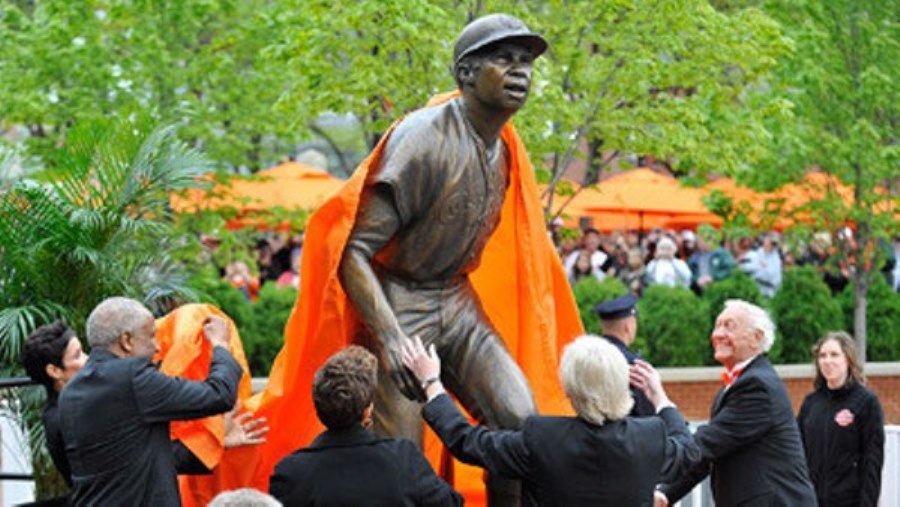|
Mets, 1962-63: Ralph Kiner, a star slugger in my youth, was now an amiable broadcaster with the horrid new team in New York. One time in a press room or team bus, Kiner was asked about the great players in the National League in that time – Aaron, Banks, Clemente, Mays, Frank Robinson. He was positive about them all, but added that in the clutch, Robinson could find more intensity, more extra bits of talent, to beat you.
Orioles, 1966: Robinson, traded by the Reds because he was “an old 30,” sparked the Orioles in their first World Series to a four-game sweep of the Los Angeles Dodgers. But that wasn’t the most impressive thing. In the Orioles’ clubhouse, the fringe players swigged Champagne and careened around the clubhouse, dousing anybody and everybody – except: In a dry corner, Frank Robinson was talking to the press. He spotted the lead sprayer, a big and boisterous pitcher, who had not appeared in the Series, and held up one index finger – and the reserve skidded to a halt like a cartoon character. Robinson waved the index finger as if to say, “Good boy,” and remained dry, very dry. Cleveland, 1977: The first black manager became the first black manager to get fired, as Joe Jares wrote in Sports Illustrated. The job was offered to Jeff Torborg, the former catcher and now a coach, but out of loyalty Jeff did not want to replace Robinson. As I have heard it, Robinson told Torborg, and I paraphrase, “Are you out of your freaking mind? That’s the way baseball works. It’s your job. Take it.” And Torborg did. San Francisco, 1981-84: Robinson got another managing job with the Giants, and I caught up with him at some point, maybe in the visiting dugout at Shea Stadium. Managers still sat around the dugout, pre-game, and talked baseball with reporters. (Few electronics; no instant social-media madness. I call them the good old days.) Musing about great baseball accomplishments, Robinson said that the statistic that floored him most was Joe DiMaggio’s career ratio of home runs (361) to strikeouts (369). I just looked it up: Robinson’s career ratio was 586 homers to 1532 strikeouts, so he was speaking with huge respect and humility. Of course, nowadays, our launch-arc lads are flailing away with total permission from the analytics types in the front office. I would have liked to hear him on that. New York, 2019: I have a baseball-savvy lawyer friend in a major baseball town, who grew up in Dayton, just up the road from Cincinnati. He remembers the day the Reds traded Robinson, and, to this day, blames the DeWitt family, which owned the Reds back then. The DeWitt family (admirable baseball people, take it from me) now owns the Cardinals, and my friend, true to his Reds boyhood, roots against any DeWitt team, because they traded Frank Robinson because – oh, you remember – he was “an old 30.” 2/8/2019 11:00:00 am
I had an encounter on a golf course across the Mississippi River from St. Louis in April 2006 with Mr. Robinson and his coaching staff, who were in town for a 4-game series vs. "the DeWitt's Cardinals" (who would catch fire late that season to win their 10th WS title). Frank, as he had warned me explicitly when we checked in together in the clubhouse, hit into our group on hole #15 because our play had slowed to a pace that was not to his liking. Usually, my mid-30s pals and I may have looked for a confrontation if someone was this bold. But, I had warned my buddies of Frank Robinson's threat before our round began, and we actually laughed hysterically that he had made good on his threat. We quickly hit our approach shots to the 15th green and played ready golf the final three holes so that we could avoid the wrath of the 70 year-old HOFer. R.I.P. Frank Robinson, you were indeed a legend! P.S. Thanks for signing my scorecard, it is tucked securely inside my copy of your book "Extra Innings".
George Vecsey
2/8/2019 04:24:15 pm
Ted, thanks. Let me assure the readers that you are the real Ted Williams in your world, a baseball/soccer guy in that great baseball/soccer town of St. Louis, with whom I chat on occasional Sunday mornings. You mentioned that FRobby gave you a great double-take when you mentioned your name at the golf course. Thanks for the view of the ultra competitive FRobby. GV
Roy Edelsack
2/8/2019 11:09:23 pm
My late father always insisted that he:
George Vecsey
2/9/2019 12:40:42 pm
Roy, good examples, all. What a nice thing to remember about Elston...a nice guy.
bruce
2/9/2019 12:21:18 pm
george,
Hansen Alexander
2/9/2019 12:32:04 pm
George, Thanks for the chronological thoughts on the marvelous career of Frank Robinson. As always, delightful notes with just the right atmosphere and context of the particular years.
George Vecsey
2/9/2019 12:41:27 pm
Bruce and Hansen: thanks for your nice comments. GV 2/13/2019 10:50:32 am
Nice tribute to Frank Robinson. A complete ballplayer and a complete person.
James Montemurro
2/13/2019 04:54:23 pm
Wonderful piece on one of the greatest to ever don a baseball uniform. I mainly remember him as the most fearless hitter in the history of the game. I once saw Don Drysdale throw at Robby's head, sending him to the ground. On the very next pitch, Frank hit a home run. Fearless. Comments are closed.
|
Categories
All
|










